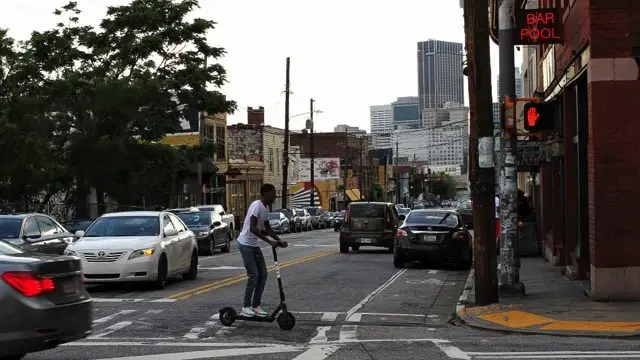At the dawn of the new century, the whole of the world scrambles in all directions to make our climate and environment safe for human life; and one of the crucial criteria seems to be ‘using less and less of our natural resources’.
With technology and science advancing rapidly, a convenient substitute seems to be depending on electrical devices that are battery powered. Using this as a very handy USP (Unique Selling Proposition), many prudent manufacturers quickly upgraded a toy previously designed for recreation, into a suitable model for transport for traveling short distances.
And that is really the long and short of the E-Scooter history.
Also Read: Ather S340, India’s First Smart Electric Scooter, Unveiled at Surge
Electric Scooters – A Boon or a Bane?
A formal launch of E-Scooters way back in 2002 by Segway paved the way for many more (like Skip, Lime and Bird) to jump on the bandwagon and while this saw a quick almost epidemic of mushrooming of E-Scooters manufacturers all over the country (US). The companies also shriveled up just as fast as issues about safety, convenience and speed cropped up.
The device seems almost magical with its use of gyroscopes to balance on two wheels, its use of sparing electricity, and that it can be steered intuitively with body movements. It offers a speed of 12 miles per hour most silently marking a thumbs up for noise pollution too.
But its major problem was that it was too fast for sidewalks, too slow and vulnerable for roads and proved to be a huge concern for safety for both the riders as well as the pedestrians.

Even as the debate is still going strong, reports about the E-Scooter being unsafe are trickling in from emergency rooms and urgent care facilities across the country.
Safety Issues with Electric Scooters
E-Scooter riders are bringing in injuries that range from sprains and broken ankles, twisted wrists, dislocated shoulders to several small or serious head injuries. While a small percentage of the patients admitted that they were intoxicated and not wearing protective headgear, it still questions the overall safety issue of using these E-Scooters within crowded city and townscapes.
Another reason that was repeatedly cited by doctors who treated these injuries of the patients that were riding these E-Scooters was the actual malfunctioning of the vehicle itself; being very prone to flipping over, especially over uneven surfaces or not having powerful brakes. Other defects included wobbly handles and accelerators that are stuck on the pedal panel.
But even as injured electric-scooter riders pour into emergency departments across the country, doctors are trying to determine if it is indeed a trend that can build up into a huge public safety crisis.
Although detailed statistical data will be difficult to tabulate before another year is up, going by the reports of the emergency room and doctors treating these patients, it may be easy to figure out that something is definitely wrong with this E-Scooters. It’s looking more and more like a technology that promised to deliver everything but did not consider the safety of human life.
Are the Safety Assurances Real?
E-Scooter manufacturing companies have constantly been reassuring that safety is their priority. They have introduced their apps and labels on the scooters that expound safety information as well as training instructions.
Parameters regarding age and driving license eligibility too are mandatory to be notified before the use of the vehicle. They also confirm a dedicated support team all around the clock to address any grievances.
Companies like Lime, Bird, and Skip have programs that give helmets to riders who request them, and Lime notes that riders must go through an “in-app tutorial” on helmet safety to unlock one of the company’s scooters for the first time.
Conclusion
Not all authorities are taking it lying down. There are checks to restrict the number of vehicles, in a certain category of towns that it will be permitted to operate in as well as other specific safety measures in place.
But the larger question yet remains to be answered. Are we really going to be giving precedence to our environment being safe or put our safety first?
Image Credit: Electric Scooter by Arne Beruldsen & Alan Kidd/Shutterstock







